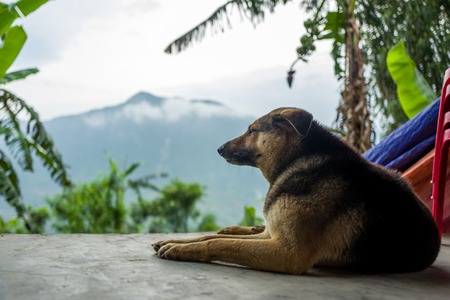1. Introduction: Embracing Age-old Village Wisdom
In the heart of India’s rural landscapes, generations have thrived by respecting and following traditional seasonal healthcare practices. These time-honoured methods, passed down from elders and rooted in the rhythm of nature, form the foundation of well-being in Indian villages. Unlike modern, one-size-fits-all approaches, village healthcare wisdom is deeply attuned to the changes in weather, local flora, and cultural customs. It is not just about individual health; it is about nurturing harmony with the environment and fostering a sense of togetherness within the community. In today’s fast-changing world, preserving these indigenous healthcare traditions is more important than ever. By embracing this legacy, we can ensure that holistic wellness and sustainable living remain at the core of our society.
2. Monsoon Care: Herbal Remedies and Home Practices
The monsoon season brings much-needed rain to Indian villages, but it also increases the risk of common ailments like coughs, colds, fevers, and stomach infections. For generations, villagers have relied on traditional herbal remedies and home practices to protect their families during these months. Here are some effective tips rooted in local wisdom:
Popular Herbal Remedies in Villages
| Herb/Ingredient | Local Name | Traditional Use |
|---|---|---|
| Tulsi (Holy Basil) | तुलसी (Tulsi) | Boil a few leaves in water or tea to relieve cold, cough, and boost immunity. |
| Neem Leaves | नीम (Neem) | Chew fresh leaves or use neem water for bathing to prevent skin infections and purify blood. |
| Dried Ginger Powder | सौंठ (Saunth) | Add a pinch to warm water or milk to ease sore throat and digestive issues. |
| Turmeric | हल्दी (Haldi) | Mix in milk to reduce inflammation and fight infections. |
Safe Food Practices During Monsoon
During the rainy season, food spoilage is common due to high humidity. To avoid stomach infections:
- Always wash vegetables and fruits with clean water before cooking or eating.
- Avoid street food and oily snacks that may harbor bacteria.
- Store grains and pulses in airtight containers to prevent fungal growth.
- Prefer freshly cooked meals over leftovers.
Ensuring Clean Drinking Water
Contaminated water is a major cause of illness during monsoon. In many Indian villages, families use simple yet effective methods for safe drinking water:
- Boiling Water: Boil water for at least 10 minutes before drinking.
- Copper Vessels: Storing water overnight in copper pots helps kill germs naturally.
- Moringa Seeds: Crush seeds and mix in water; after settling, filter out impurities for cleaner water.
These age-old village remedies and mindful practices not only preserve health but also strengthen community bonds by passing down knowledge from elders to the younger generation. By embracing traditional wisdom alongside modern hygiene, rural families can stay healthy and resilient throughout the monsoon season.

3. Summer Heat: Natural Cooling and Hydration Traditions
In Indian villages, the intense summer heat calls for time-tested, indigenous solutions to keep cool and hydrated. One of the most popular traditional drinks is buttermilk (known locally as chaas), a refreshing beverage made from curd, water, and spices. It not only quenches thirst but also aids digestion and replenishes lost electrolytes. Another widely loved summer cooler is nimbu pani, a simple yet effective lemon water drink often enhanced with salt, sugar, and sometimes mint leaves—providing instant relief from dehydration and sunstroke.
Earthen Pots for Water Storage
Villagers continue to use earthen pots, or matkas, for storing drinking water. These natural clay vessels keep water cool through evaporation, offering an eco-friendly and electricity-free alternative to modern refrigerators. Sipping matka-chilled water is a daily ritual in many homes, especially during the peak summer months.
The Importance of Shade and Rest
Recognising the dangers of direct sunlight, elders advise taking shelter under large trees or village verandas during midday hours. Agricultural activities are scheduled early in the morning or later in the evening, allowing families to rest when the sun is at its strongest. This tradition of seeking shade and planned rest not only preserves health but also fosters community bonding as neighbours gather together in shaded spaces.
A Harmonious Relationship with Nature
These age-old practices reflect a deep understanding of local climate and resources. By relying on natural cooling drinks, sustainable storage methods, and collective wisdom about rest, Indian villages set an inspiring example of adapting to seasonal challenges while respecting both health and environment.
4. Winter Wellness: Keeping Warm with Traditional Foods
In Indian villages, winter is not just a change in weather but a time to embrace age-old wisdom for staying healthy and warm. Families rely on traditional seasonal foods that are rich in nutrition and help the body adapt to the cold. The use of ingredients like sesame seeds, jaggery, ginger, and ajwain (carom seeds) is deeply rooted in local culture and Ayurveda, providing both comfort and immunity during chilly months.
Power of Traditional Winter Ingredients
| Ingredient | Local Name | Health Benefits |
|---|---|---|
| Sesame Seeds | Til | Rich in healthy fats, calcium, and magnesium; helps generate body heat and strengthen bones |
| Jaggery | Gur | Packed with iron and minerals; boosts energy and aids digestion |
| Ginger | Adrak | Improves blood circulation, relieves coughs, and enhances immunity |
| Ajwain | Omam/Carom Seeds | Eases respiratory issues, aids digestion, and keeps the body warm |
Popular Homemade Winter Delicacies
During winter, villagers prepare special treats like til laddus, which combine roasted sesame seeds with jaggery to create an energy-rich snack loved by all ages. These laddus not only taste delicious but also provide warmth and essential nutrients. Ginger tea is another staple, often brewed with ajwain to soothe sore throats and keep the body cozy on cold mornings. Such foods are lovingly shared among family members and neighbours as a gesture of care during the season.
Cultural Practices for Community Well-being
Sharing these homemade foods has become a community tradition—elders pass down recipes and tips to younger generations, ensuring that no one is left out during harsh weather. Consuming these natural immunity boosters helps reduce common ailments like colds or coughs without relying solely on modern medicines.
Sustainable & Accessible Healthcare Wisdom
The beauty of these traditional practices lies in their accessibility—most ingredients are locally grown or easily available at village markets. By embracing such time-tested methods, rural communities foster collective health and demonstrate the power of simple, mindful living grounded in nature’s rhythms.
5. Community Care: Shared Responsibility and Local Healers
In Indian villages, community care is a deeply-rooted tradition that goes beyond individual health to embrace the well-being of all. The collective spirit ensures that seasonal health challenges are faced together, with each member playing a role in prevention and healing. Trusted local healers, often known as daayans or vaidyas, serve as pillars of community healthcare. Their knowledge of age-old remedies, herbal treatments, and spiritual healing methods is respected and sought after during times of illness, especially when modern healthcare facilities are far away.
Community members look out for one another, sharing advice on diet changes during monsoons, home-made immunity boosters in winter, or ways to stay cool during scorching summers. Seasonal healthcare practices such as group cleaning drives before the rains or joint preparation of herbal tonics are common in many villages. These activities strengthen social bonds and ensure everyone benefits from collective wisdom.
Passing on this traditional knowledge is seen as a sacred duty. Elders teach younger generations not just about specific remedies but about the values of empathy, patience, and mutual support. Many families still observe rituals where children watch and learn from their grandparents as they prepare medicinal pastes or recite prayers for good health. This oral transmission safeguards indigenous knowledge systems and keeps the community united in its approach to wellness.
By fostering a culture of shared responsibility, Indian villages demonstrate how healthcare can be both inclusive and sustainable. The involvement of local healers and communal practices makes seasonal healthcare accessible to all, regardless of age or economic status. Such traditions not only address physical ailments but also promote emotional resilience and social harmony within rural communities.
6. Connecting with Nature for Holistic Wellbeing
In Indian villages, the bond between people and nature forms the foundation of a healthy lifestyle throughout the changing seasons. The use of local flora—herbs, trees, and medicinal plants—has always been central to traditional healthcare. Villagers often grow herbs such as tulsi, neem, and aloe vera in their courtyards, using them for daily remedies, teas, or even as natural air purifiers. This age-old wisdom not only supports physical health but also connects individuals with their roots.
Organic Gardening: A Community Practice
Many rural families maintain organic vegetable gardens beside their homes. Seasonal crops like spinach in winter or okra in summer are grown without chemical fertilizers or pesticides. This practice ensures a steady supply of nutritious food that is free from harmful residues. Organic gardening is often a collective effort—sharing seeds, exchanging produce, and working together strengthens community ties and promotes food security.
The Power of Outdoor Activities
Daily village life naturally involves plenty of outdoor activities: tending fields, walking to fetch water, or playing traditional games like kabaddi and kho-kho. These activities keep villagers physically active and mentally refreshed. Exposure to fresh air and sunlight helps regulate sleep patterns and boosts immunity. Children learn about local wildlife and seasonal changes first-hand, fostering respect for nature from an early age.
Mental Balance through Connection with Earth
Spending time amidst greenery, listening to birdsong, or simply working barefoot on the land has proven benefits for mental wellbeing. Elders often recommend sitting under a tree or meditating by a riverbank to ease stress and encourage positive thoughts. This holistic approach—where physical activity, mindful engagement with nature, and the use of native plants come together—ensures year-round health and harmony in village communities.
By embracing these traditions rooted in India’s rich culture, villagers continue to enjoy robust health and a balanced mind, setting an inspiring example for sustainable living everywhere.


